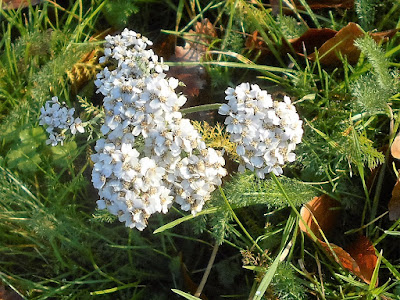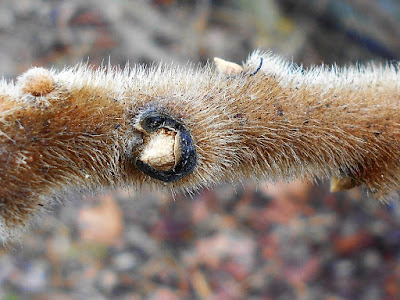We stayed in Hooke or, to be more precise, Hooke Court, a fine old building of considerable antiquity and where 'Time Team' did some archaeological work in March 2016, finding material dating back to the 16th century. The site itself though is much older, with the Saxon earl, Aelthric, apparently having lived on the site but clear archaeological evidence for this is lacking.
 |
| Hooke Court, near Beaminster, Dorset. 22 December, 2016 |
During the dig much interest was centred on the 'moat' - a semi-circular water feature occupying a large proportion of the grounds but it does not appear to have been a defensive feature.
 |
| The arc-shaped lake at Hooke Court. 22 December, 2016 |
All very interesting but, given the lovely weather, we spent much of the time at the coast. The nearest seaside town was Bridport, a bustling and interesting place but with no pretensions as a seaside resort. However, West Bay, nearby, had achieved some fame as the setting for ITV's 'Broadchurch'; the towering cliffs were a feature of the programme.
 |
| Towering cliffs at West Bay, Bridport, Dorset. 23 December, 2016 |
They were impressive but free of any obvious fossils - though an expert would probably have located a few. All the rocks around the area are of Jurassic age but not necessarily providing rich pickings for a palaeontologist.
Weymouth was graced with a visit from us, as was Lyme Regis, but we only spent a brief time at the latter. The weather was particularly fine for our day in Weymouth, with Chris able to enjoy sunshine on the harbour wall.
 |
| Weymouth Quay was bathed in sunshine. 27 December, 2016 |
The three-masted training ship Pelican of London is based at Weymouth and is an attractive vessel, built in 1947 to 16th-17th century designs. For construction to have been completed in a time of severe post-war austerity strikes me as remarkable. It was refitted some years later for its present use.
 |
| T.S. Pelican of London in Weymouth harbour. 27 December, 2016 |
But what of the wildlife? To be honest I spent very little time looking for flowers and insects; late December is not usually a productive month for these things. The wet valley bottom below Hooke Court had a few examples of Tufted Sedge, Carex elata.
 |
Tufted Sedge formed hummocks at the wet valley
bottom at Hooke, Dorset. 24 December, 2016
|
This is extremely rare and close to extinction in Northamptonshire due to drainage, but is locally frequent in parts of Britain. I had not seen any specimens for many years although the large tussocks it forms are very distinctive.
The only other plant to catch my attention was in a municipal garden at Lyme Regis. A specimen of Euphorbia characias subspecies wulfenii was being grown in a remarkable fasciated form. I assume that it had been selected for this peculiarity. Fasciation is the abnormal behaviour of meristematic tissue. It often takes the form of flattened branches but in this case had occurred at the leaf shoot, producing an odd crested (cristate) appearance.
 |
This fastigiated Euphorbia grew in gardens at Lyme Regis,
Dorset. 24 December, 2016
|
It had been many years since I had last visited Dorset. This winter break has made Chris and I consider a further visit in, perhaps, May.














































